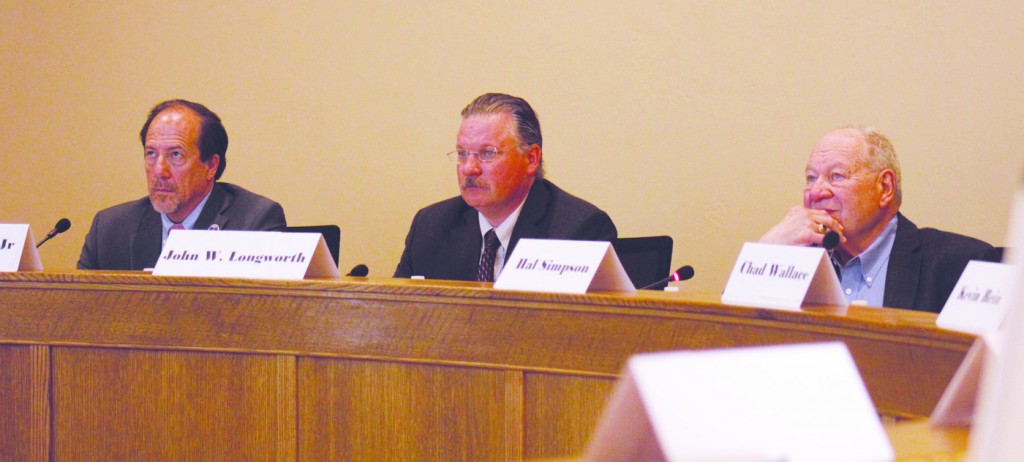80th RG Compact meeting held

ALAMOSA — The 80th annual meeting of the Rio Grande Compact Commission convened in front of a packed house last Thursday, April 4 at the Rio Grande Water Conservation District office. The Commission is made up of representatives from Colorado, Texas and New Mexico, and is tasked with “equitably apportioning the waters of the Rio Grande above Ft. Quitman, Texas.” The Commission is in its’ 103rd year of existence. There was an atmosphere of cooperation that was tangible throughout the proceedings.
Following the call to order by Chairman Hal Simpson, Commissioners Kevin Rein of Colorado, John D’Antonio of New Mexico and Pat Gibson of Texas introduced the delegations that were present from their respective states. Rein also offered remarks in recognition of Ruth Heides’ service to the water community in the San Luis Valley and the Rio Grande Basin through her work as Editor of the Valley Courier.
Colorado Division of Water Resources Division 3 Engineer, Craig Cotten, who serves the Engineer Adviser for Colorado presented the report on behalf of his fellow advisors, John Longworth of New Mexico and Suzy Valentine of Texas. Some of the highlights that Cotten presented included Rio Grande Basin conditions and the Middle Rio Grande Endangered Species Program. Cotten also shared that the amount of water that was relinquished by each state for the compact from 2013-2018. Colorado had a total of 2,068 acre-feet of relinquished water. New Mexico has a to-date relinquishment total of 288,328 acre-feet. It was also noted that forecasting is crucial. An area of focus for Colorado has been the installation of permanent Doppler Radar at Durango and Alamosa. Cotten said that Colorado will be “better able to track winter precipitation,” though the radar. The increased forecasting is expected to significantly benefit Colorado’s role in the administration of the compact.
Each state also has its own accounting of water utilized for the compact. While there are currently some discrepancies between Texas and New Mexico, the advisers expressed willingness to work together to resolve the differences.
Cotten further noted the engineer advisers had previously reviewed the operating costs for the compact for the previous fiscal year, which ended on June 30, 2018, totaled $208, 491.00. The advisers also presented the proposed budget for the 2020 fiscal year for a total of $203, 868.00 with a contribution of $52,733 from the United States federal government. The commission unanimously approved the adviser’s report.
The Commission also heard presentations from the numerous federal agencies that serve as partners in the administration of the compact. Some of the presenters included representatives from the U.S. Bureau of Reclamation, Lt. Col. Larry Caswell, Jr. of the U.S. Army Corps. Of Engineers; Viola Sanchez from the U.S. Bureau of Indian Affairs; Shawn Sartorius of the U.S. Fish and Wildlife Service; Johnathan Bumgarner of the U.S. Geological Survey; and Jane Harkins of the International Boundary and Water Commission.
The meeting was concluded on a note of gratitude from the New Mexico and Texas representatives for the hospitality that they were shown while in Alamosa. The tradition of the Rio Grande Compact is expected to continue well into the future.



